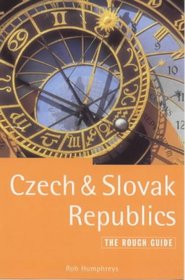Search -
The Rough Guide to The Czech & Slovak Republics
The Rough Guide to The Czech Slovak Republics
Author:
INTRODUCTION The Czechs and Slovaks have rarely been in full control of their historical destiny. The Nazis carved up their country in 1938, only twenty years after its foundation; the Iron Curtain descended just ten years later; and in 1968, Warsaw Pact tanks trampled on the country's dreams of "socialism with a human face". Even the break-up o... more »
Author:
INTRODUCTION The Czechs and Slovaks have rarely been in full control of their historical destiny. The Nazis carved up their country in 1938, only twenty years after its foundation; the Iron Curtain descended just ten years later; and in 1968, Warsaw Pact tanks trampled on the country's dreams of "socialism with a human face". Even the break-up o... more »
ISBN-13: 9781858285290
ISBN-10: 1858285291
Publication Date: 7/1/2000
Pages: 528
Edition: 5Rev Ed
Rating: ?
ISBN-10: 1858285291
Publication Date: 7/1/2000
Pages: 528
Edition: 5Rev Ed
Rating: ?
0 stars, based on 0 rating
Genres:
- Travel >> Europe >> Czech Republic >> General
- Travel >> Europe >> General
- Travel >> Europe >> Germany >> General
- Travel >> Europe >> Slovakia
- Travel >> Reference >> Guidebooks
- Travel >> Travel Writing
- Travel >> Guidebook Series >> Rough Guide




